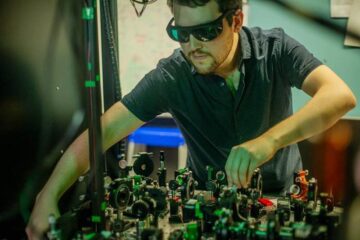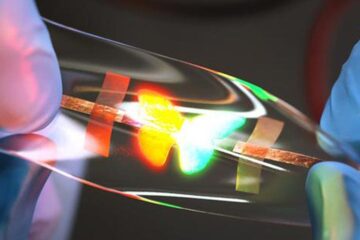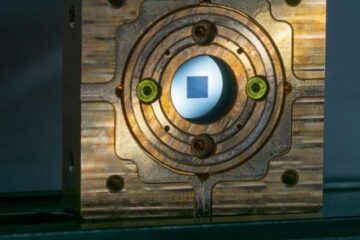Diagnosis Just a Breath Away with New Laser

Published in the journal Optics Letters, the researchers from the University’s Institute for Photonics and Advanced Sensing and the School of Chemistry and Physics describe how they have been able to produce 25 times more light emission than other lasers operating at a similar wavelength – opening the way for detection of very low concentrations of gases.
“This laser has significantly more power and is much more efficient than other lasers operating in this frequency range,” says Ori Henderson-Sapir, PhD researcher. “Using a novel approach, we’ve been able to overcome the significant technical hurdles that have prevented fibre lasers from producing sufficient power in the mid-infrared.”
The new laser operates in the mid-infrared frequency range – the same wavelength band where many important hydrocarbon gases absorb light.
“Probing this region of the electromagnetic spectrum, with the high power we’ve achieved, means we will be able to detect these gases with a high degree of sensitivity,” says Project Leader Dr David Ottaway. “For instance, it should enable the possibility of analysing trace gases in exhaled breath in the doctors’ surgery.”
Research has shown that with various diseases, minute amounts of gases not normally exhaled can be detected in the breath; for example, acetone can be detected in the breath when someone has diabetes.
Other potential applications include detection in the atmosphere of methane and ethane which are important gases in global warming.
“The main limitation to date with laser detection of these gases has been the lack of suitable light sources that can produce enough energy in this part of the spectrum,” says Dr Ottaway. “The few available sources are generally expensive and bulky and, therefore, not suitable for widespread use.”
The new laser uses an optical fibre which is easier to work with, less bulky and more portable, and much more cost effective to produce than other types of laser.
The researchers, who also include Jesper Munch, Emeritus Professor of Experimental Physics, reported light emission at 3.6 microns – the deepest mid-infrared emission from a fibre laser operating at room temperature. They have also shown that the laser has the promise of efficient emission across a large wavelength spectrum from 3.3-3.8 micron.
“This means it has incredible potential for scanning for a range of gases with a high level of sensitivity, with great promise as a very useful diagnostic and sensing tool,” says Dr Ottaway.
This research was supported by the State Government through the Premiers Science Research Foundation (PSRF).
Media Contact:
Dr David Ottaway
Senior Lecturer, School of Chemistry & Physics
Institute for Photonics & Advanced Sensing
The University of Adelaide
Phone: +61 8 8313 5165
Mobile: +61 430 325 099
david.ottaway@adelaide.edu.au
Mr Ori Henderson-Sapir
PhD Candidate
School of Chemistry & Physics
Institute for Photonics & Advanced Sensing
The University of Adelaide
Mobile: +61 403 119 776
ori.henderson-sapir@adelaide.edu.au
Media Contact
More Information:
http://www.adelaide.edu.auAll latest news from the category: Physics and Astronomy
This area deals with the fundamental laws and building blocks of nature and how they interact, the properties and the behavior of matter, and research into space and time and their structures.
innovations-report provides in-depth reports and articles on subjects such as astrophysics, laser technologies, nuclear, quantum, particle and solid-state physics, nanotechnologies, planetary research and findings (Mars, Venus) and developments related to the Hubble Telescope.
Newest articles

Combatting disruptive ‘noise’ in quantum communication
In a significant milestone for quantum communication technology, an experiment has demonstrated how networks can be leveraged to combat disruptive ‘noise’ in quantum communications. The international effort led by researchers…

Stretchable quantum dot display
Intrinsically stretchable quantum dot-based light-emitting diodes achieved record-breaking performance. A team of South Korean scientists led by Professor KIM Dae-Hyeong of the Center for Nanoparticle Research within the Institute for…

Internet can achieve quantum speed with light saved as sound
Researchers at the University of Copenhagen’s Niels Bohr Institute have developed a new way to create quantum memory: A small drum can store data sent with light in its sonic…





















